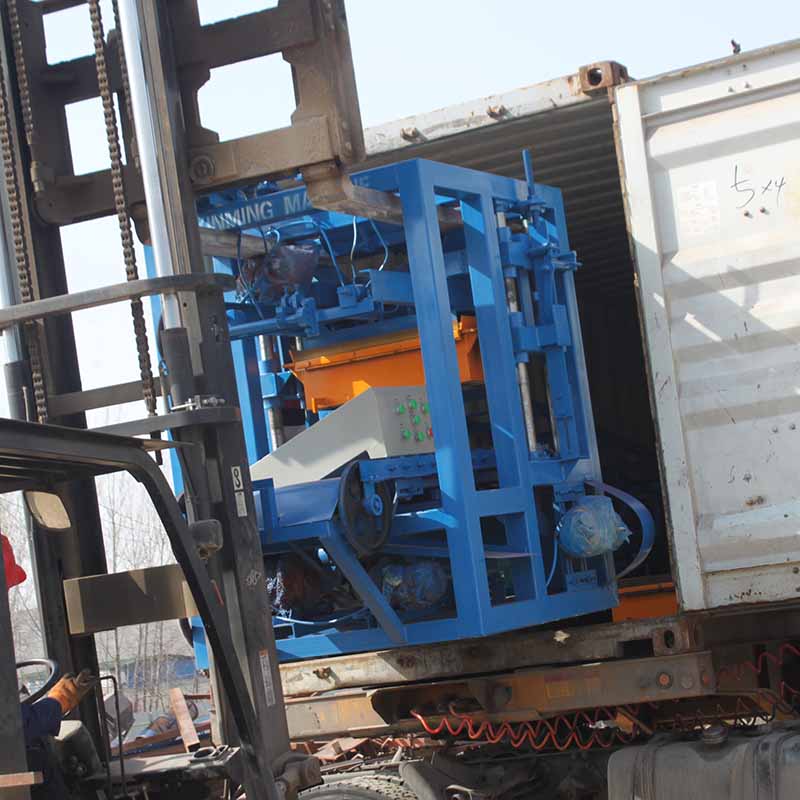
Image source:Aiwei block machine
Introduction:
The construction industry has witnessed significant advancements in recent years, and brick making machines have played a crucial role in transforming the way bricks are produced. These machines have increased efficiency, reduced labor requirements, and improved the quality of bricks. However, the evolution of technology is constant, and the future of brick making machines holds even more exciting possibilities. In this article, we will explore the trends and potential advancements that lie ahead for brick making machines.
Automation and Robotics:
As technology continues to advance, automation and robotics are expected to play a significant role in the future of brick making machines. Automated processes, such as robotic brick laying and automated material handling, will streamline production and reduce the reliance on manual labor. This will not only increase productivity but also enhance precision and consistency in brick production. Robotic systems can be programmed to lay bricks with utmost accuracy, resulting in faster construction and improved structural integrity.
Artificial Intelligence and Machine Learning:
The integration of artificial intelligence (AI) and machine learning (ML) algorithms into brick making machines holds immense potential. AI and ML can be utilized to optimize machine performance, monitor and analyze production data in real-time, and identify areas for process improvement. These technologies can also assist in predictive maintenance, identifying potential machine failures before they occur, and optimizing maintenance schedules. AI-powered brick making machines will not only increase productivity but also enable proactive decision-making and efficient resource allocation.
Sustainable Materials and Practices:
The future of brick making machines will also focus on sustainability and environmentally friendly practices. The construction industry is increasingly prioritizing sustainable materials and methods, and brick making is no exception. Manufacturers are exploring alternative materials such as recycled aggregates, fly ash, and other waste byproducts to produce eco-friendly bricks. Additionally, innovations in brick design, such as interlocking bricks and hollow bricks, can further enhance energy efficiency in buildings. The incorporation of these sustainable materials and practices into brick making machines will contribute to a greener and more sustainable construction industry.
Modular and Customizable Designs:
Flexibility and customization are becoming key requirements in the construction industry. The future of brick making machines will offer modular designs that allow for easy adaptation to different brick sizes, shapes, and patterns. Manufacturers will provide a range of interchangeable molds, enabling the production of customized bricks for specific architectural designs. This flexibility will cater to the evolving demands of the construction industry, enabling architects and builders to create unique and aesthetically pleasing structures.
Integration with Construction Technologies:
Brick making machines will be seamlessly integrated with other construction technologies, such as Building Information Modeling (BIM) and construction robotics. BIM software can be used to generate digital models of buildings, allowing for precise planning and coordination with the brick making machines. This integration will optimize the construction process, improve efficiency, and minimize errors. Additionally, brick making machines can collaborate with construction robots, allowing for efficient and precise brick placement in complex structures.
Energy Efficiency and Reduced Emissions:
Energy efficiency and reduced emissions will be at the forefront of future brick making machines. Manufacturers will focus on developing machines that operate on renewable energy sources, such as solar power or advanced battery systems. The use of energy-efficient components and systems will further reduce the carbon footprint of brick production. By adopting these advancements, brick making machines will align with global efforts to combat climate change and promote sustainable construction practices.
Remote Monitoring and Control:
The future of brick making machines will embrace remote monitoring and control capabilities. Manufacturers will integrate Internet of Things (IoT) technologies into the machines, allowing for real-time monitoring of production processes, machine performance, and maintenance requirements. This remote monitoring and control will enable operators to have a holistic view of the machine’s operations and make informed decisions. Additionally, remote diagnostics and troubleshooting can minimize downtime and improve overall productivity.
Enhanced Safety Features:
Safety will continue to be a top priority in the future of brick making machines. Manufacturers will incorporate advanced safety features, such as machine vision systems, to detect and prevent accidents. Machine learning algorithms can analyze real-time video feeds to identify potential safety hazards and trigger immediate responses. Additionally, the development of collaborative robots, or cobots, will enable safer interaction between humans and machines, further reducing the risk of injuries in the brick production process.
Improved Data Analytics and Reporting:
Data analytics and reporting capabilities will be significantly enhanced in future brick making machines. Manufacturers will provide comprehensive data analytics platforms that generate detailed production reports, performance metrics, and predictive insights. These analytics will enable manufacturers to optimize processes, identify bottlenecks, and make data-driven decisions for continuous improvement. The availability of detailed production data will also benefit construction companies, as they can demonstrate compliance with quality standards and regulatory requirements.
Continuous Innovation and Research:
The future of brick making machines will be driven by continuous innovation and research. Manufacturers, researchers, and industry professionals will collaborate to explore new technologies, materials, and methods to further enhance the capabilities of these machines. This collaborative approach will ensure that brick making machines remain at the forefront of the construction industry, addressing the evolving needs of builders, architects, and developers.
Conclusion:
The future of brick making machines holds immense potential for transforming the construction industry. Automation, robotics, AI, sustainability, modular designs, integration with construction technologies, energy efficiency, remote monitoring, safety features, data analytics, and continuous innovation are the key trends and potential advancements to look out for. These developments will not only increase productivity and efficiency but also contribute to a greener, more sustainable, and safer construction industry. As technology continues to evolve, brick making machines will play a vital role in shaping the future of construction.
